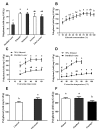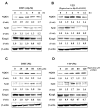Antioxidant Properties of a Traditional Vine Tea, Ampelopsis grossedentata
- PMID: 31395833
- PMCID: PMC6719964
- DOI: 10.3390/antiox8080295
Antioxidant Properties of a Traditional Vine Tea, Ampelopsis grossedentata
Abstract
Ampelopsis grossedentata, also called vine tea, has been used as a traditional beverage in China for centuries. Vine tea contains rich polyphenols and shows benefit to human health, but the chemical and antioxidant properties of vine tea polyphenols from different locations remain unclear. This study aims to investigate the chemical and antioxidant properties of vine tea from three major production areas in China including Guizhou, Hunan, and Guangxi Provinces. The highest amount of polyphenol from vine tea was extracted by 70% ethanol at 70 °C for 40 min with ultrasonic treatment. The major compound in vine tea polyphenols (VTP) was determined as dihydromyricetin (DMY) by high-performance liquid chromatography (HPLC) and the content was estimated as 21.42%, 20.17%, and 16.47% of dry weight basis from Hunan, Guizhou, and Guangxi products, respectively. The antioxidant activities were investigated in vitro and in culture hepatic cells. VTP and DMY showed strong 1,1-Diphenyl-2-picrylhydrazyl free radical (DPPH) scavenging ability and high oxygen radical absorption capacity (ORAC) value in vitro. VTP and DMY also increased the level of nicotinamide adenine dinucleotide phosphate (NADPH):quinone oxidoreductase (NQO1) in HepG2 cells. Moreover, VTP and DMY enhanced the level of nuclear factor erythroid 2-related factor 2 (Nrf2) and reduced the level of Kelch-like ECH-associated protein 1 (Keap1). Taken together, our data demonstrated that the extraction of vine tea by 70% ethanol with ultrasonic treatment is a novel method to efficiently obtain components possessing stronger antioxidant activity. Furthermore, the results from the culture cells suggest that the bioactive component of vine tea might exert the antioxidant activity by activating the cellular Nrf2/Keap1 pathway.
Keywords: Ampelopsis grossedentata; Nrf2/Keap1; antioxidant ability; dihydromyricetin.
Conflict of interest statement
The authors declare no conflicts of interest.
Figures





References
-
- Zhang H., Tsao R. Dietary polyphenols, oxidative stress and antioxidant and anti-inflammatory effects. Curr. Opin. Food Sci. 2016;8:33–42. doi: 10.1016/j.cofs.2016.02.002. - DOI
LinkOut - more resources
Full Text Sources
Research Materials
Miscellaneous

